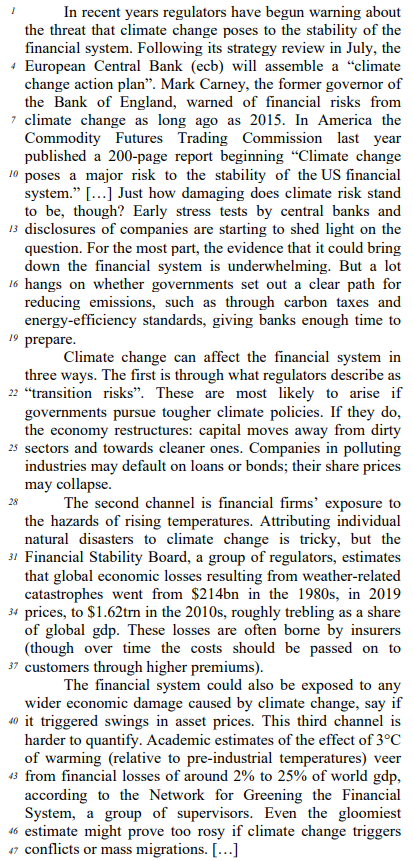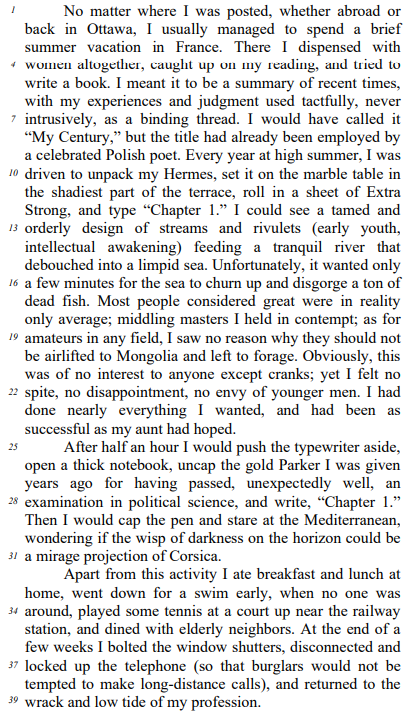Questões de Inglês - Vocabulário | Vocabulary para Concurso
Foram encontradas 1.964 questões
Leia o texto para responder às questões de números 43 a 46.
In 1972 a British linguist, D. A. Wilkins, proposed a functional or communicative definition of language that could serve as a basis for developing communicative syllabuses for language teaching. Wilkins’s contribution was an analysis of the communicative meanings that a language learner needs to understand and express. Rather than describe the core of language through traditional concepts of grammar and vocabulary, Wilkins attempted to demonstrate the systems of meanings that lay behind the communicative uses of language. He described two types of meanings: notional categories (concepts such as time, sequence, quantity, location) and categories of communicative function (requests, denials, offers, complaints).
Proponents of Communicative Language Teaching (CLT) see it as an approach that aims to (a) make communicative competence the goal of language teaching and (b) develop procedures for the teaching of language skills that acknowledge the interdependence of language and communication. Its comprehensiveness thus makes it different in scope and status from any of the earlier traditions in language teaching. There is no single text or authority on it, nor any single model that is universally accepted as authoritative. What is essential in all of them is that at least two parties are involved in an interaction of some kind where one party has an intention and the other party expands or reacts to the intention.
(RICHARDS, J.C. & RODGERS,T. Approaches and Methods in Language Teaching. Cambridge: CUP, 2001. Adaptado)
In the fragment from the first paragraph “Rather than describe the core of language through traditional concepts of grammar and vocabulary”, the underlined expression means the same as
Text CB1A7
Whenever a global economic transformation takes place, a single city usually drives it forward. Ghent, in modern-day Belgium, was at the core of the burgeoning global wool trade in the 13th century. The first initial public offering took place in Amsterdam in 1602. London was the financial centre of the first wave of globalisation during the 19th century. Today the city is San Francisco.
California’s commercial capital has no serious rival in generative artificial intelligence (AI), a breakthrough technology that has caused a bull market in American stocks and which, many economists hope, will power a global productivity surge. Almost all big AI start-up companies are based in the Bay Area, which comprises the city of San Francisco and Silicon Valley (largely based in Santa Clara county, to the south). OpenAI is there, of course; so are Anthropic, Databricks and Scale AI. Tech giants, including Meta and Microsoft, are also spending big on AI in San Francisco. According to Brookings Metro, a think tank, last year San Francisco accounted for close to a tenth of generative AI job postings in America, more than any other city of the country. New York, with four times as many residents, was second.
Internet: <www.economist.com> (adapted).

According to the text, mark the statements below as right (C) or wrong (E).
The word “assemble” (line 4) can be correctly replaced
by the word “propose”.
Text to answer the question.

GALLANT, Mavis. Let it Pass. In: Montreal Stories.
Toronto: McClelland & Stewart, 2004. (adapted)
Considering the vocabulary in the text, mark the statements below as right (C) or wrong (E).
In the second paragraph, the word “wisp” (line 30) refers
to something small.
Text to answer the question.

GALLANT, Mavis. Let it Pass. In: Montreal Stories.
Toronto: McClelland & Stewart, 2004. (adapted)
Considering the vocabulary in the text, mark the statements below as right (C) or wrong (E).
The word churn up (line 16) means “to move something
with great force or violently”.